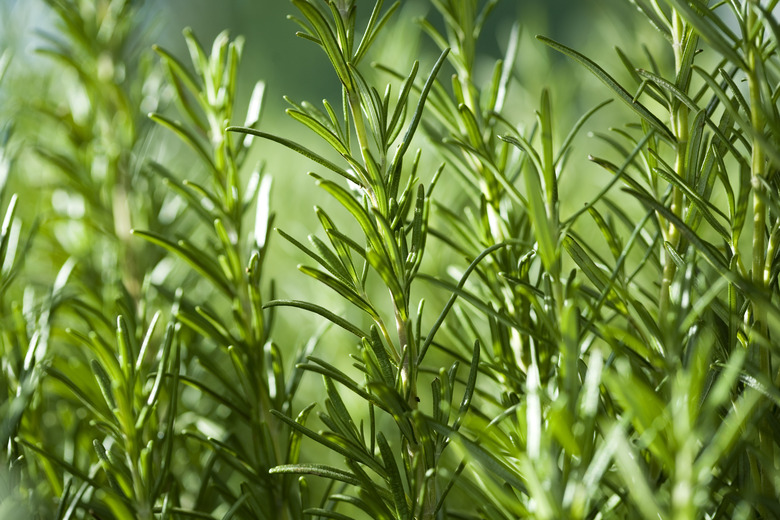How To Split Rosemary Plants
When they start to grow large, you might want to split your rosemary plants into smaller sections. Although some plants take well to division, or splitting, woody herbs such as rosemary (Salvia rosmarinus, USDA zones 7-11) are propagated best with the layering technique. When layering, simply allow new plants to spring up alongside the "mother" plant until they're sturdy enough for you to "cut their cords" and move them to new locations to expand your herb garden.
Things Needed
-
Clean cloth (optional)
-
Landscape pegs or U-shaped flexible wire
How to Split Rosemary Plants
1. Select Tall, Healthy Stems
Choose one or two outer stems from the main rosemary plant, ensuring the stems look healthy and are tall. Spring is the best time to start this process, when the stems are most flexible and have plenty of time to root. If you want to layer more than one stem, then choose stems on each side of the main plant, and ensure each stem has room to grow.
2. Prepare a Trench
Dig a narrow trench about 2 inches deep along a 12-inch-long section of soil next to the rosemary plant. You can also judge the length for the trench by the general height of the stem that will lay in it, minus about 2 inches of the stem's leafy end.
3. Prepare the Selected Stem
Strip a selected rosemary stem of most of its needlelike leaves, keeping the leaves on about 2 inches of the stem's tip. Use a small, sharp knife to slice the underside of the stem gently in several places, and dust the underside with hormone rooting powder. Sanitize the knife before and after its use by either wiping it with, or dipping it into, isopropyl alcohol.
4. Position the Stem
Bend the stem gently down so that it lays flat against the bottom of the shallow trench. Do not press the last 2 inches of the stem's tip into the soil. That leafy part will remain above-ground. Use a landscape peg or U-shaped flexible wire at the midpoint of the stem to ensure the underside of the stem remains in contact with the ground.
5. Fill the Trench With Soil
Fill the rest of the trench with the soil you removed when making the trench so that most of the stem is buried but its leafy end sticks above the soil.
6. Repeat With Other Stems
Repeat the process with each stem you want to layer to create a new plant. If you have several mature rosemary plants that you want to propagate, then repeat the process for the layering technique with them.
7. Water the Layered Stems
Water the soil of the buried stems on a regular basis until the stems form rootlets. Although rosemary plants usually don't do well in moist soil, the baby plants will.
8. Monitor the Rooting Process
Check for rootlets after several weeks by gently digging around the buried stems. It can take several months for the rosemary layering technique literally to take root. So be patient.
9. Separate the New Plant
Separate the young, well-established plants from their mother rosemary plant by slicing off the young plants near the base of the mature plant.
10. Replant the New Rosemary Plant
Transplant each young rosemary plant to its own container that has bottom drainage holes and is filled with potting mix. Alternatively, plant the young rosemary plants in a sunny place in your garden. When setting the young plants into containers or a garden bed, plant them at the same soil depth at which they previously grew. That depth usually is marked by a definite soil line on a plant's stem.
